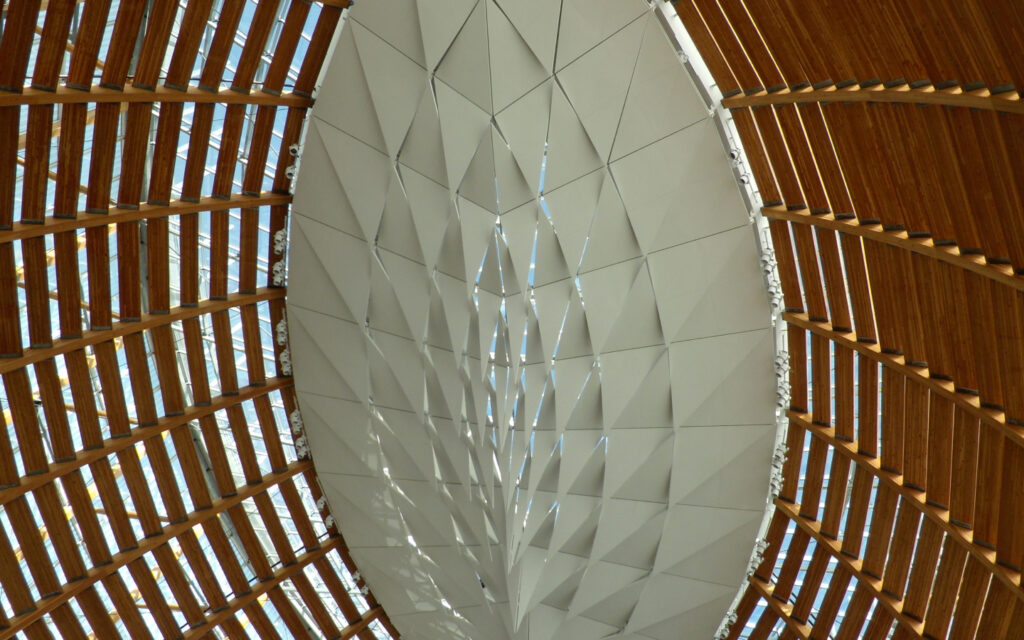Ruthan Lewis, Ph.D. zoomnthru@hotmail.com
Summary statement
Humans have an innate need to explore the unknown and seemingly intangible. Human spaceflight on and off planetary surfaces under extraordinary resource and operational constraints, perfectly exemplifies this need. Mission success requires an integrated systems framework and iterative process considering multidimensional and multidisciplinary factors and their influences. The unique, tender balance of crafting pragmatic architectural elements while enriching the space wayfarer’s sensory and spiritual experience to enable and enhance their health and mission performance, and supporting multicultural interaction is compelling. Implications of the space traveler’s adaptation and humanistic and transcending perspective as they detach from Earth accommodations, transfer to deep space travel and planetary surface habitats, and return to Earth is equally compelling.
Topic
The unique environment of space poses many technical design challenges to sustain human life. Naturally, adequately accommodating safety, crew activities, and social and behavioral well-being is required. These aspects are influenced by stressors impacting the health and performance of the crew, including isolation, confinement, psychosocial interactions and dynamics, cultural variations, autonomy, distance from “home”, communication latency, etc. The orientation of the entire habitat (e.g. horizontal, vertical, or hybrid-based axis and local vertical) and general configuration of habitation elements and areas such as sleep quarters, galley, workstations, recreation, personal hygiene, stowage, etc. directly affect the reaction to these stressors. These stressors may be compounded and the risk of adverse behavioral outcomes will increase as human spaceflight ventures beyond low earth orbit to deep space and beyond. That is, requirements to support optimum crew health, safety, and performance, and the associated internal architecture of spacecraft and space habitat will likely be different from present spacecraft in order to accommodate unprecedented mission demands. For example, considerations for reduced access to ready resources bring to light the need to “live off the land” via in-situ resource utilization including customized design and making capabilities by the crew themselves, to reuse and recycle resources, to aim for shared functionality, to convert logistics components to living capabilities, etc.

Notional Deep Space Transit Vehicle Longitudinal Arrangements, Plan/Section

Notional Deep Space Transit Vehicle Longitudinal Arrangement, Section

Notional Deep Space Transit Vehicle Vertical/Axial Arrangements
Aspects affecting sensory interaction such as visual cues (e.g. colors, textures, site-lines, circulation, windows, displays), auditory, fragrance, and tactile factors may take on an even greater impact during long-term confinement and isolation from Earth, and may even affect spiritual perspectives. For example, Edgar Mitchell, Lunar Module Pilot, likened his space experience to “savikalpa samadhi”, i.e. “you see things as you see them with your eyes, but you experience them emotionally and viscerally as with ecstasy and a sense of total unity and oneness”. Neil Armstrong, first person on the Moon, explained, “It suddenly struck me that that tiny pea, pretty and blue, was the Earth. I put up my thumb and shut one eye, and my thumb blotted out the planet Earth. I didn’t feel like a giant. I felt very, very small.” Skylab astronaut, Edward Gibson stated, “It allows you to have inner peace”. Methods for facilitating, enabling, and sharing this transcending visual and sensory experience is to be considered within the habitation system.

Views of Earth from the International Space Station, Moon, and Mars
Future deep space human vehicles and activities will involve international partners. As with the International Space Station, the entire spacecraft and habitation system will continue to be “…the blueprint for global cooperation – one that enables a multinational partnership and advances shared goals in space exploration”. Sharing of the habitat will be influenced by language and communication variations, and cultural and technical diversity. Being sensitive to and enabling these relations through design via bridging and celebrating commonalities, intersections, and differences, will be key to effective teaming, social interaction, health, and mission success.

Crewmembers on the International Space Station
Conclusion
The deep space habitation system is multivariate and complex. Understanding the methods by which behavioral aspects, “salutogenic” factors, architectural design and arrangement, and innovative technical pragmatism under constrained resources combine and impact crew wellbeing and mission success is imperative. Forecasting consequences and effects of these factors on a variety of spaceflight systems and operations, and communicating and applying the space traveler’s unique, extraordinary perspective while producing societal benefits are valuable goals. These goals are required to inform and advance human exploration and discovery and understand our place and future in the universe.
References
Ihle, E.C., Ritsher, J.B., Kanas, N. “Positive Psychological Outcomes of Spaceflight an Empirical Study”. Aviation, Space, and Environmental Medicine, 77(2): 93-101, February, 2006.
Lewis, R., Kennedy, K., Toups, L., Howard, R., Whitmire, A., Smitherman, D., Howe, S., “Architectural and
Behavioral Systems Design Methodology and Analysis for Optimal Habitation in a Volume-Limited Spacecraft for Long Duration Flights”, Psychology in Architecture Conference, December 2016,
National Aeronautics and Space Administration, “Pioneering Next Steps in Space Exploration”, October 2015.
Simon, M., Latorella, K., Martin, J., Cerro, J., Lepsch, R., Jefferies, S., Goodliff, K., McCleskey, C., Smitherman, D., Stromgren, C., “NASA Advanced Exploration Systems Mars Transit Habitat Refinement Point of Departure Design”, 2017 IEEE 38th Aerospace Conference, March 2017.
Smitherman, D., Russell, T., Baysinger, M., Capizzo, P. Fabisinksi, L., Griffin, B. Hornsby, L., Maples, D., Miernik, J., “Deep Space Habitat Configurations Based on International Space Station Systems”, AIAA Space Conference, May 2012.
Smitherman, David, “Deep Space Habitats”, Humans to Mars Summit 2015, May 2015.
The Overview Institute, Overview Documentary. http://www.overviewinstitute.org/
Vakoch, D.A., Psychology of Space Exploration – Contemporary Research in Historical Perspective. National Aeronautics and Space Administration, Washington, D.C., 2011.
White, Frank, The Overview Effect: Space Exploration and Human Evolution. American Institute of Aeronautics and Astronautics, 1998.
Whitmire, A., L. Leveton, H. Broughton, M. Baser, A. Kearney, L. Ikuma, M. Morris, “Minimum Acceptable Net Habitable Volume for Long-Duration Exploration Missions”, National Aeronautics and Space Administration, NASA/TM-2015-218564, April 2015.




